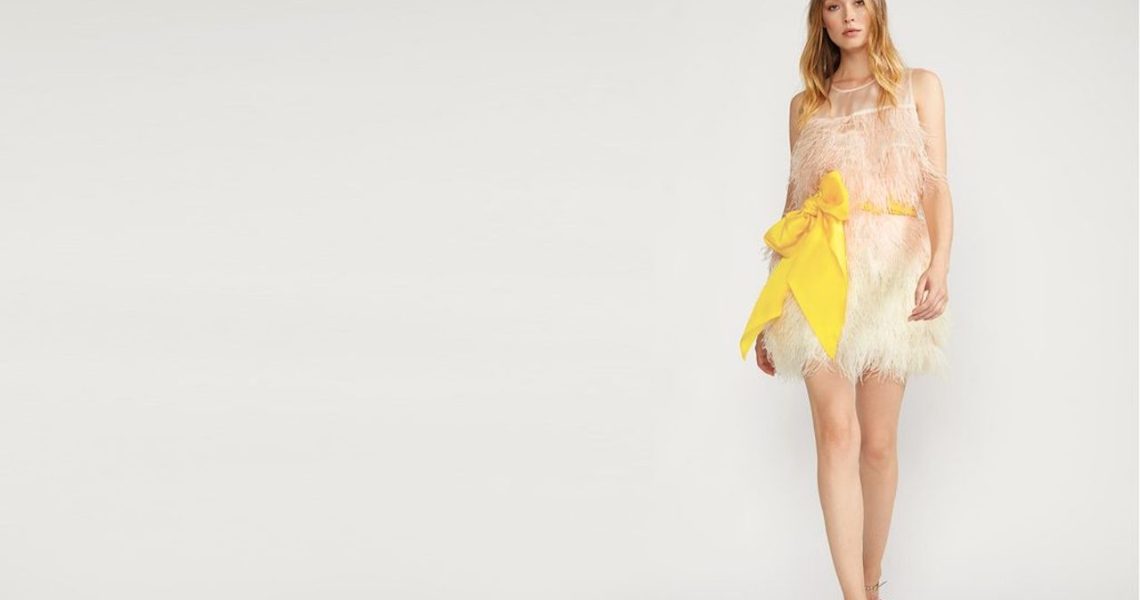Cynthia Rowley is pivoting its business model from wholesale to direct-to-consumer, in an effort to remain relevant as consumers’ expectations change.
Currently, 75% of Cynthia Rowley’s sales are DTC, and it has 10 stores. Before it began actively shifting to a DTC model in 2017, it was 25% DTC and had four stores. Going 100% direct-to-consumer is not a goal, however.
“It’s important to have a blended approach between DTC, wholesale and drop-ship, to not lose the potential of introducing the brand to loyal specialty retailer customers and converting them into brand loyalists,” said founder Cynthia Rowley.
Allie Egan, the brand’s president and CEO, said its sales are up 300% from last year.
For brands, the DTC model has caught on thanks to the access to customers and customer data it provides. For consumers, a major perk of shopping without a middleman is lower prices. Companies in Cynthia Rowley’s contemporary fashion category have increasingly shifted to DTC, including Milly, Tibi and Rebecca Taylor. Faced with the threat of being squeezed out by low-cost and luxury brands, it makes sense that the contemporary market seems to be picking a side by offering more affordability.
“Direct-to-consumer is a matter of control: controlling your inventory, and controlling the storytelling, the messaging and even the design,” said Rowley. “For years, everything designers did had to go through a filter before it got to their audience, whether the filter was a buyer or an editor. Now, being able to have that direct access to an audience, and being able to listen and really bring newness based on that listening — it takes a lot of the risk factor out of it. And that’s ultimately created more profitability.”
Cynthia Rowley stores are peppered throughout the West Coast, Florida and New York City, plus the company has hosted a variety of pop-ups in other markets since 2017. Eight pop-ups were planned for this year. To drive customers to its stores and site, the brand invests in digital marketing — email, text and social media — as well as community marketing and events in-stores. The brand’s e-commerce data guides the location of new stores, which serve as a method for consumer acquisition and drive sales online.
Ad position: web_incontent_pos1
“Being able to maintain newness, experiment and do smaller amounts of things, all while remaining in control creates surprise-and-delight with our audience. It also allows us to continue telling the story in a really fresh way,” Rowley said. For Cynthia Rowley, that means a very personalized way, through digital marketing initiatives, in-store experiences and influencer activations.
From a design perspective, Rowley said she now has no limits in terms of what she creates. “We’ve been able to introduce a lot of collaborations and be experimental with things. Then, after seeing what the reaction is, we’ve been able to follow through on that,” she said. One collaboration she deemed successful was with Impala on roller skates. Rowley believes people are now seeing the brand in a new way, now that it’s investing in marketing. It’s tested new ways to connect with consumers where they are, including its new podcast, Ageless.
Egan said she’s seen how many wholesale brands have been struggling, so she’s been trying to figure out how to “create a sustainable business that’s cashflow positive.” After being widely distributed in wholesale, its retail partners now include Neiman Marcus, Shopbop, Revolve, Farfetch and select high-end specialty boutiques. Egan said a retail partner is right when it helps the brand reach new customers, whether that means those in a new age group or a new market.
“We’re independently financed, and we really wanted to make that work for us and have money to grow the business,” Egan said. “We now have the technology at our hands to enable us to do this in an affordable fashion. We’re on Shopify and that has allowed us to really quickly and cost-effectively create an amazing digital business. [The new Cynthia Rowley business model is] more like taking some of the other DTC efforts [we were] engaging in and making DTC a bigger piece of the puzzle.”
Since its inception in 1988, Cynthia Rowley has been able to retain its core older customers, but its e-commerce business has been attracting a much younger customer. Sixty-eight percent of the brand’s customers online are under 44, and 38% are under 34. More than 25% of the brand’s social following is in the 18-24 group. To draw in a broad range of consumers, the brand has worked with a variety of influencers that manifest those different customer types.
Ad position: web_incontent_pos2
With the move to DTC will come new categories in 2020, some with a focus on luggage and travel. And the company will be increasing its focus on international growth.
“In the past, things were never fast enough for me. I’m not very patient, and I never wanted to wait to put out new styles,” said Rowley. “Now, we can replenish quickly — cut and run — and we can get out of something if it’s not working. All of that immediacy DTC creates is what I’m really excited about and what I think really keeps us fresh, nimble and new. We’re able to put so much more personality into things.”




